
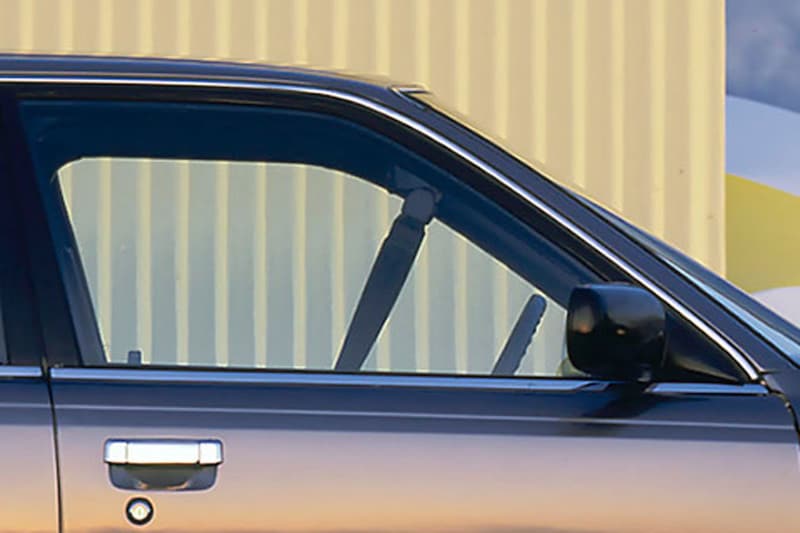


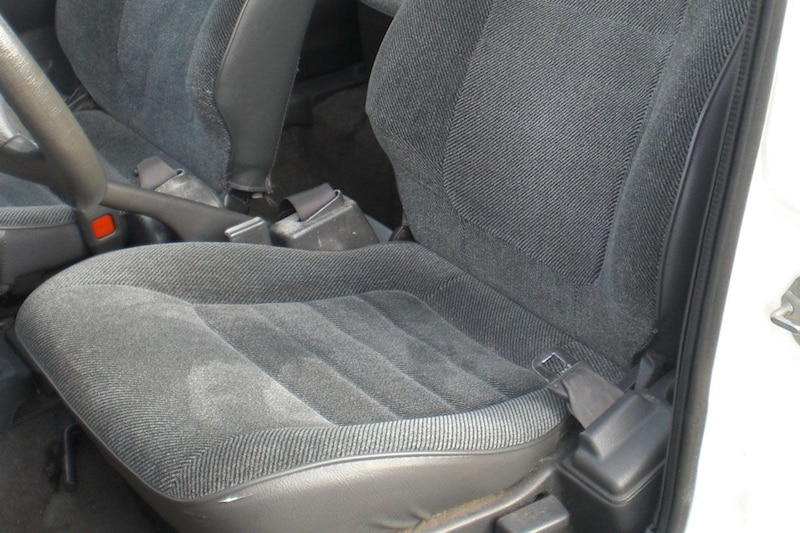
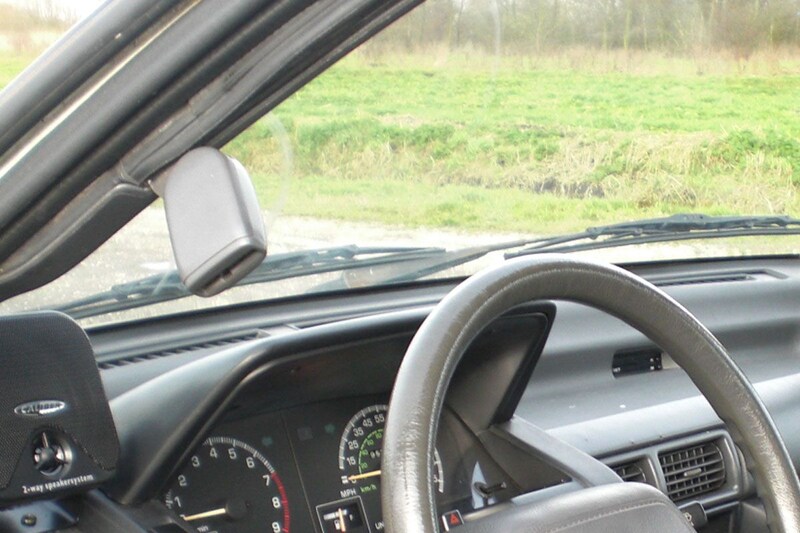
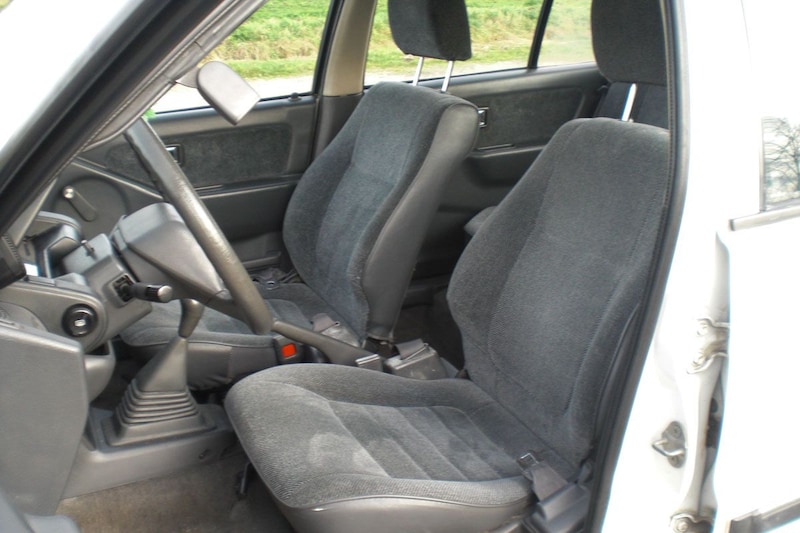
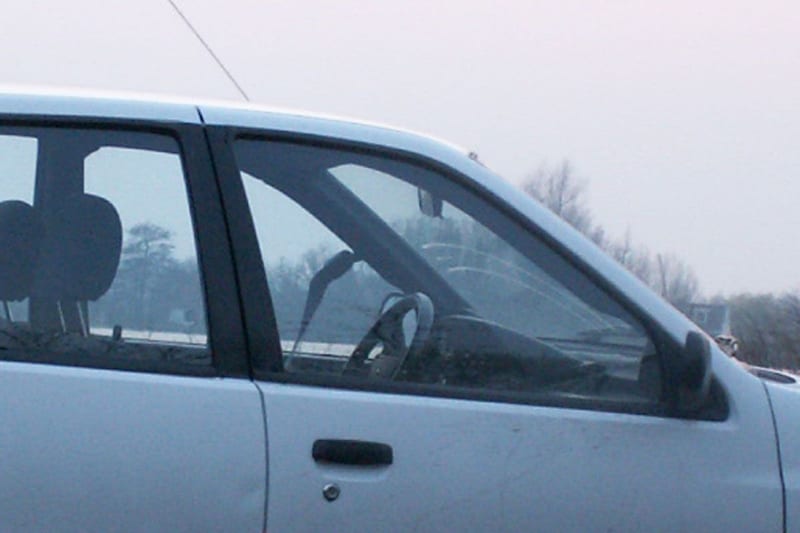
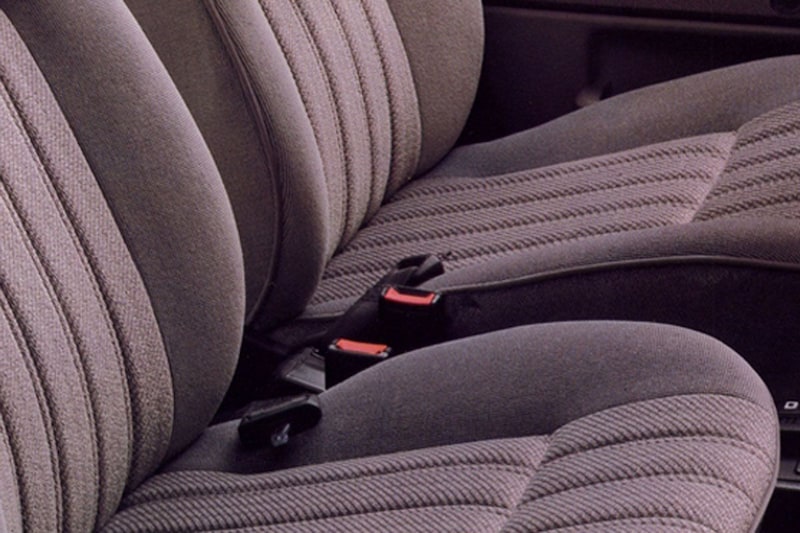
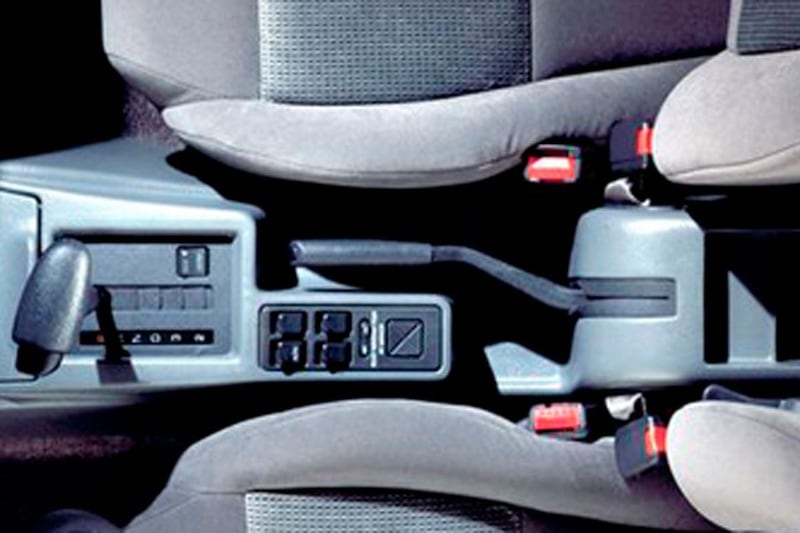

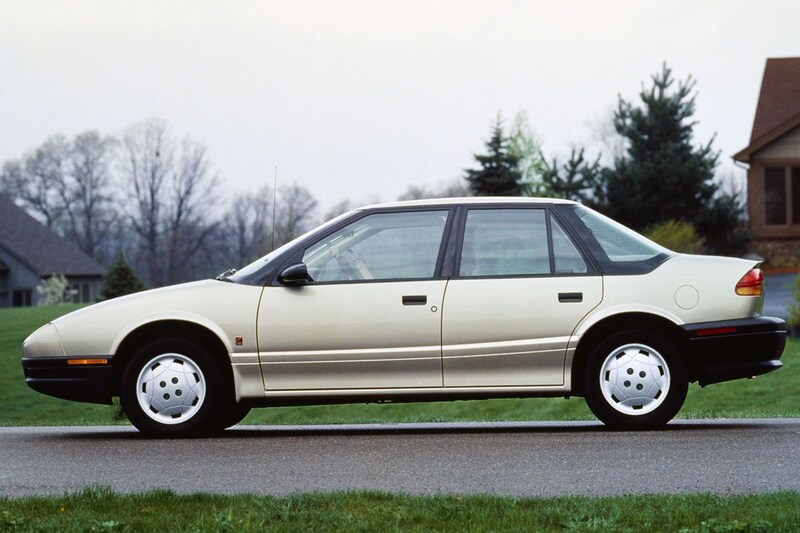
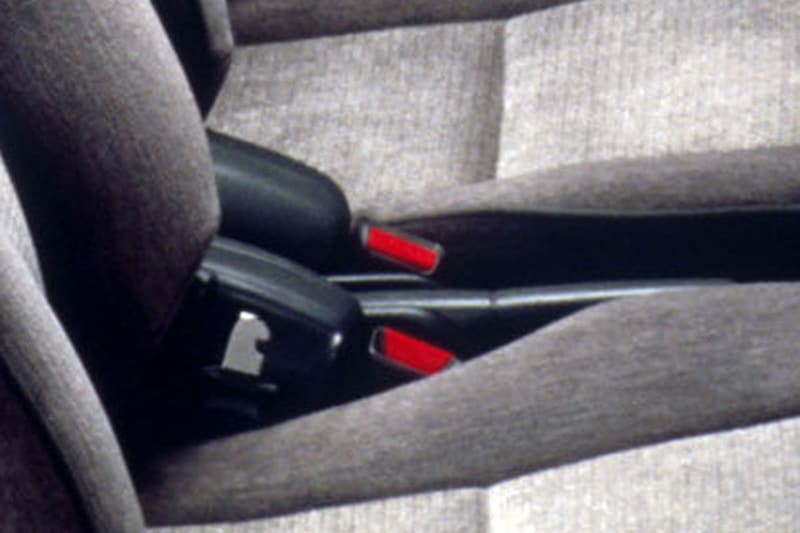


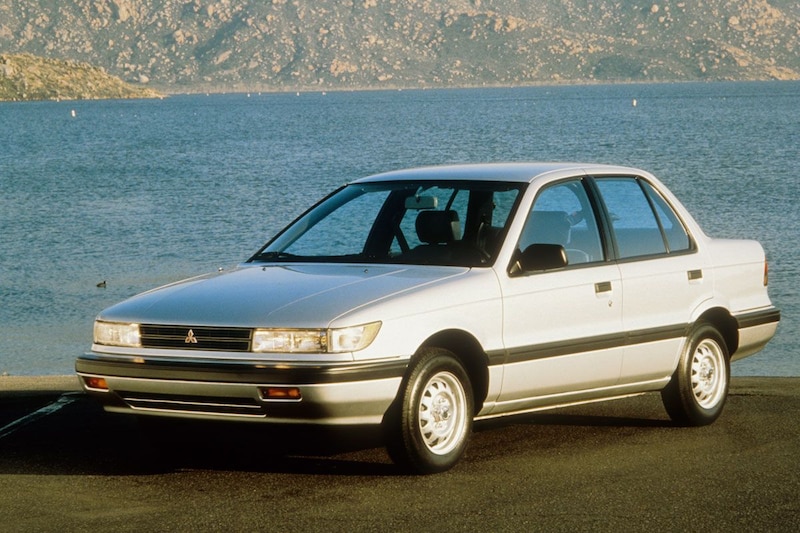

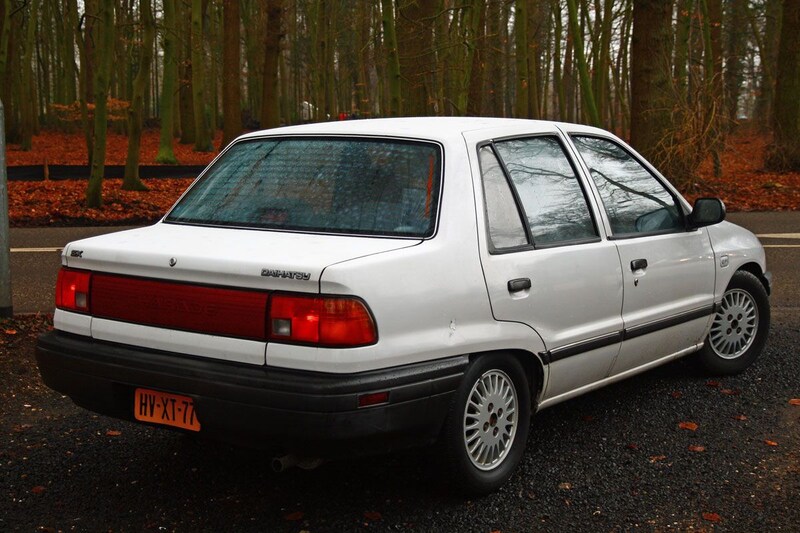
A belt that you don’t have to put on yourself, but that automatically wraps its way around your upper body. Sounds like a form of superfluous luxury for Maybach or Bentley, but actually this remarkable facility can be found mainly in simple middle class little ones from the 1980s and 1990s. That includes a whole story.
Take a good look at the first picture above. What is wrong? Good, the seat belts are fastened. Can happen, but there is more to it. Take another look and you will see that the seat belts are not fully engaged. They are literally half in use: only the part that covers the torso diagonally is present. The hip piece is therefore not, and the accompanying belt catchers are not in use.
This is all possible because the car in question is equipped with a feature most Dutch people will not recognize: automatic seat belts. They came in a number of variants and were created in the course of the 1970s. The idea was simple. The three-point seat belt (thanks to Volvo) had been around since the late 1950s and represented a huge step forward in safety. However, to work, people have to use them. This often turned out to be too much to ask for, especially for American drivers.
To crawl
The car manufacturers’ solution consisted of the fully automatic seat belt. That sounds incredibly complex, but in its original form it was actually not at all. The top and bottom of the belt, including the roller mechanism, was simply mounted to the door instead of to the B-pillar. In this way, the driver and passenger can easily ‘crawl under the seat belt’ when boarding. Close the door and voilà: safety guaranteed.

Although the automatic seat belts were common in Americans and Japanese, it was reportedly Volkswagen who first applied this form of automatic seat belts. In the photo gallery above, this unpowered variant can be seen in the Geo Metro (Suzuki Swift, yellow) and Nissan 240SX, the latter being a convertible. The similarity between the two: they are both cars without rear doors and therefore with a fairly long front door. This creates the space required for mounting a complete seat belt in the door.
Either airbag, or automatic seat belt
That space was not always there. That is why there were also variants where only the top part of the belt was mounted to the door, supplemented with a manual hip section. More ingenious is the powered version, which was used very often, especially later in the eighties and early nineties. Not without reason, because from model year 1990 (i.e. 1989) cars in the US had to have either a driver’s airbag or an automatic seat belt. The latter turned out to be cheaper, so many manufacturers of the more affordable models in particular opted for this solution.
Now the writer of this story can call himself an expert on this ‘electric belt’, because he once owned a Daihatsu Charade imported from the US with such a belt system. A short search through old, dusty photo folders actually yielded a few more photos on which this system can be clearly seen.
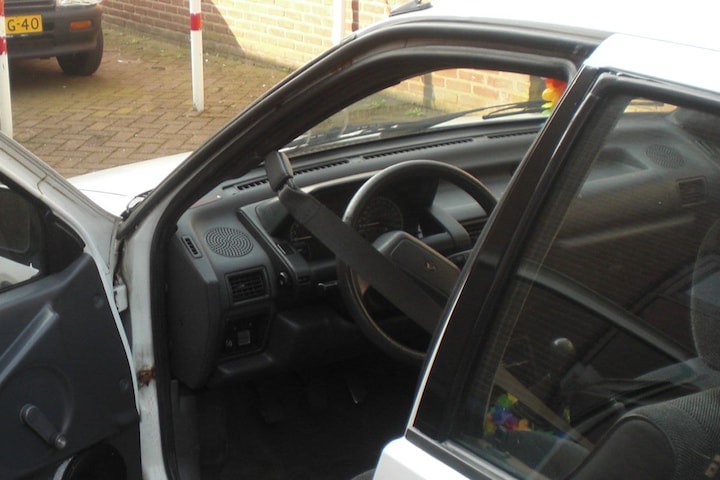
Rail
Like the variant described above, the automated belt consisted of two parts, a manual hip part and a separate top part. The latter could be rolled up in a cassette mounted on the inside of the seat, but in principle always remained attached to a belt catcher mounted on the A-pillar. So the seat belt ran roughly from the normal mounting point on the right side of the seat to a spot halfway up the A-pillar, near the handlebars. There the belt was attached to a real rail. Starting the engine – or switching on the ignition – activated that rail, on which the seat belt makes its way to a position directly above the driver’s shoulder with all kinds of charming buzzing and clicking noises.
In practice, the system has quite a few drawbacks. The main one is that the hip part can still be forgotten and that the chance of this may even be greater than with a normal belt, since the ‘top part’ gives the impression that everything is okay. In addition, it is a particularly complex solution with a difficult to measure effect, although there are reportedly studies that show that such an automatic seat belt contributes to safety. With the advent of the airbag, seat belt reminder and many other restraint systems, the automatic seat belt also died a natural death in the US, although it must be emphasized that an airbag cannot replace a seat belt under any circumstances.
The audiovisual support for this talk is offered to us by YouTube / Ardhimas Kamdani